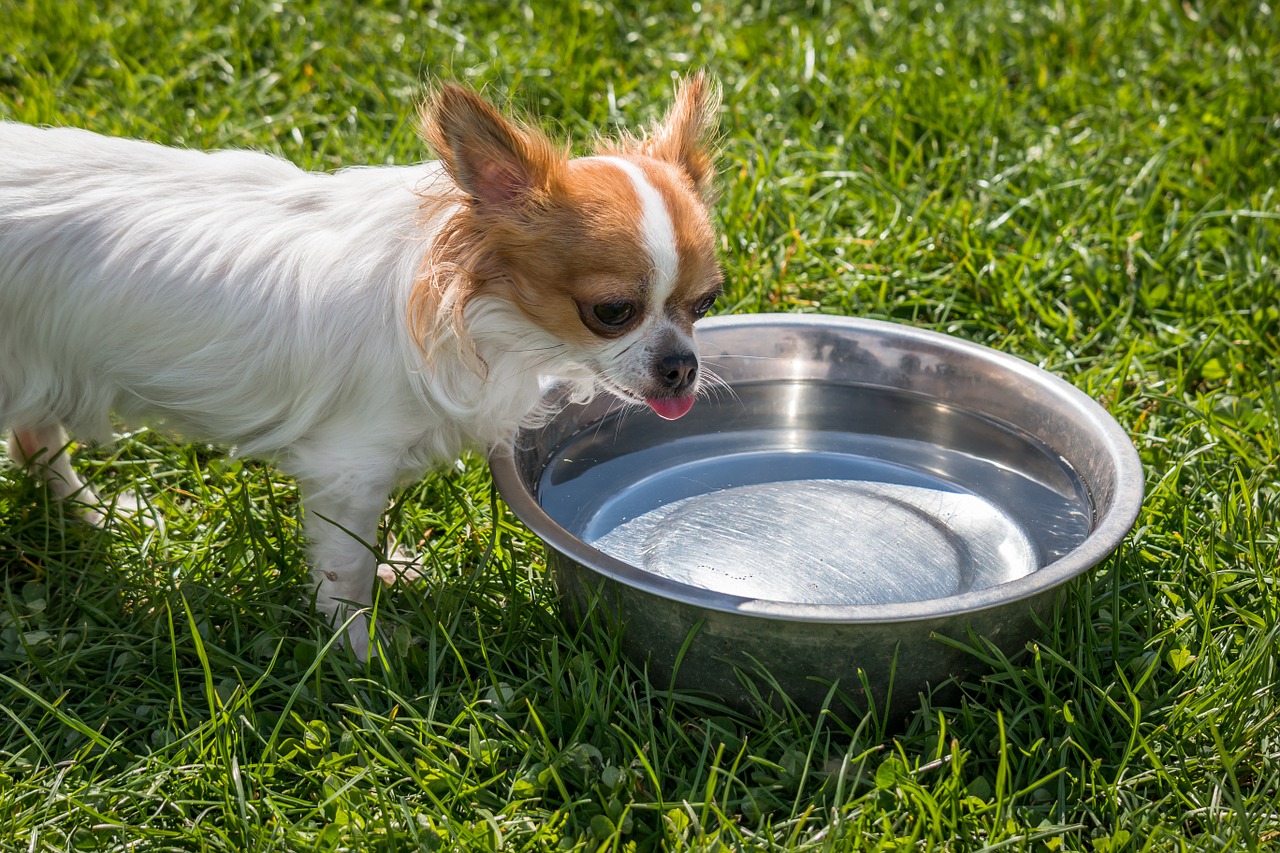
Inflammatory and immune-related diseases are the main indications for the use of cortisone in dogs. When used for a short period of time, the medication is usually well tolerated by the animals. However, when used for a long period of time, serious side effects can occur. If the dog is prescribed cortisone, pet owners should be aware of the risks.
What is cortisone and when is it used?
Cortisone is the name given to glucocorticoids with anti-inflammatory and immunosuppressive effects . In the body of a healthy dog, cortisone is produced in the adrenal cortex – initially in an inactive form. The hormone becomes effective when it is converted into cortisol. It enters the bloodstream and reaches the various organs. There it acts on all cells that have the corresponding glucocorticoid receptors.
Cortisone is also known as the “ stress hormone ” because it is released in increased amounts in stressful or dangerous situations. The metabolism is boosted and the organism is able to draw energy from the body’s own reserves. Heart, muscle and brain activity are increased to prepare the body for flight or fight. The body temperature rises and the sensation of pain is reduced.
The general term cortisone also refers to a range of synthetic glucocorticoids that can be administered to dogs as medication. Many diseases based on inflammatory processes, allergic reactions and autoimmune diseases can be treated with glucocorticoids.
Synthetic glucocorticoids were developed to optimize the effect of cortisone for therapeutic purposes. The aim is to achieve a more selective effect and reduce side effects . There are now various variants of glucocorticoids for different areas of application.
Glucocorticoids for dogs are classified according to their duration of action . Short-acting cortisones are, for example, prednisolone or hydrocortisone with half-lives of eight to 36 hours. Dexamethasone is considered a medium-acting cortisone and has an effect duration of over 48 hours. There are also long-acting cortisones whose effects last for several weeks.
Depending on the illness, cortisones for dogs can be administered in the form of tablets, sprays, ointments or injections . The veterinarian decides which variant, dosage and duration of use is most suitable for the animal’s condition.
Prednisolone in tablet form is very often used in small animals . Regular administration of the medication once or twice a day offers better control than depot preparations.
Areas of application of cortisone in dogs
There are many different areas of application for glucocorticoids in dogs. It is important that glucocorticoids are always prescribed by a veterinarian. The treatment plan should be strictly followed. Regular checks to adjust the dosage if necessary are necessary, as side effects can be expected with prolonged use. The main area of application for cortisone in dogs is the inhibition of inflammation or immune reactions:
- inflammatory diseases of the musculoskeletal system
- inflammatory diseases of the gastrointestinal tract (e.g. IBD)
- allergic diseases (e.g. atopy)
- autoimmune diseases
- hypoadrenocorticism (adrenal cortex insufficiency)
- inflammatory/allergic respiratory diseases
Cortisones for dogs are dosed individually. The severity of the disease, the course of the disease and the animal’s response to the therapy all play a role. In addition, the shortest reasonable duration of therapy is always chosen. In some cases, a combination with other medications is possible, which can reduce side effects.
How quickly does cortisone work in dogs?
Cortisones have both an immediate effect and effects that take effect after 20 to 30 minutes or even days. The immediate effect is based on a stabilization of the cell membranes throughout the organism. This effect is used, for example, when swelling due to a severe allergic reaction is to be prevented .
There are also genomic mechanisms . The cortisones bind to the glucocorticoid receptors in the cytosol of the dog’s body cells, reach the cell nucleus and change gene expression and thus also the cell’s protein production. Metabolic processes are modified in this way. The main properties of the drugs are based on this effect.
Side effects of cortisone in dogs
When a glucocorticoid is used for a short period of time (for example, when treating an allergic reaction after an insect bite), the side effects of cortisone are generally not serious and disappear once the treatment is finished. Cortisone can cause dogs to pant and develop a strong appetite or thirst .

However , with long-term use , for example in the case of a chronic illness, the side effects of glucocorticoids can cause problems. If the undesirable effects are severe, treatment must be stopped.
Typical side effects of cortisone in dogs are:
- Changes in skin and fur (cracked skin, hair loss)
- vomiting and/or diarrhea
- Ulcers of the stomach or intestinal mucosa
- muscle breakdown
- Polydipsia/polyuria (excessive thirst/increased urination)
- liver function tests
- Behavioral changes (e.g. lethargy or aggression)
- fat deposits
- weight gain
- worsening or triggering of diabetes
- wound healing disorders
- increased risk of infections
However, if cortisone causes severe side effects in dogs, the medication should not simply be discontinued. If the therapy is to be stopped or paused, glucocorticoids must be gradually tapered off, as otherwise the dog could experience a life-threatening Addisonian crisis (acute adrenal insufficiency).
You can cover the costs of medication and veterinary treatment for your dog with the dog health insurance get a refund from SantéVet.
Tapering off cortisone: This is what you need to consider!
The production of cortisone in the adrenal cortex is controlled by a feedback mechanism . When cortisone is needed, the hypothalamus (part of the diencephalon) releases corticotropin-releasing hormone (CRH). This causes the release of ACTH (adrenocorticotropic hormone) from the pituitary gland. ACTH ultimately stimulates cortisone production in the adrenal cortex.
If there is a lot of cortisone, the hypothalamus and pituitary gland react by reducing the hormones that promote production. This also happens when the body is given cortisone from outside. The production of the body’s own cortisone in the adrenal gland is suppressed. After an abrupt cessation of therapy, the body therefore does not have enough cortisone available and the symptoms of a cortisone deficiency appear:
- decreasing stress tolerance
- fatigue
- Tremble
- diarrhea /vomiting
- drop in blood pressure
- dehydration
- slowed heartbeat
The tapering off of cortisone in dogs is done according to certain protocols. These depend on the original treatment plan. The dose of the medication is always reduced by a certain amount during tapering until the organism has adjusted its own production.
Tapering off is necessary if cortisones have been used in high concentrations or over a longer period of time.